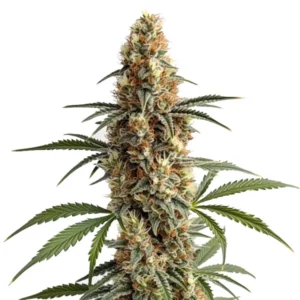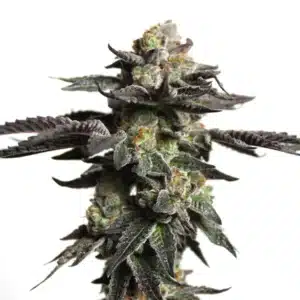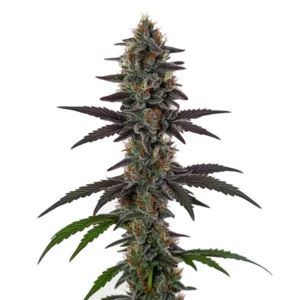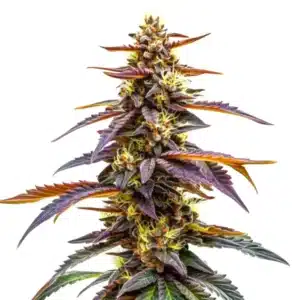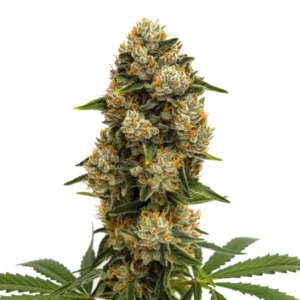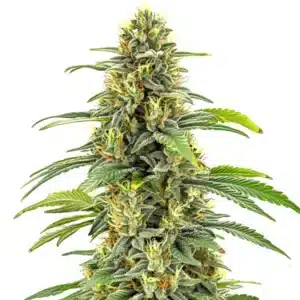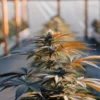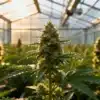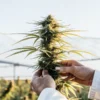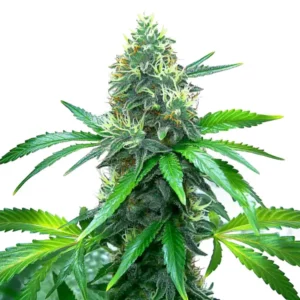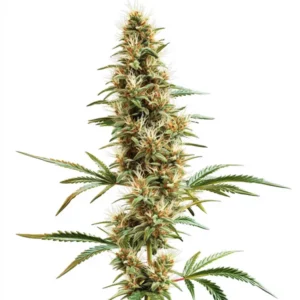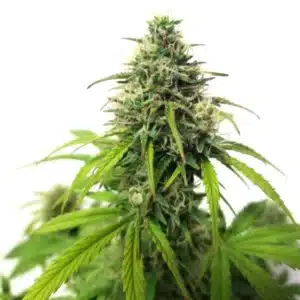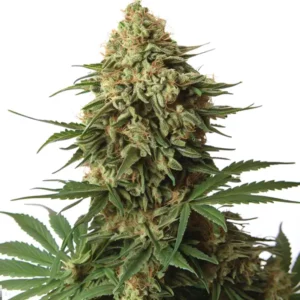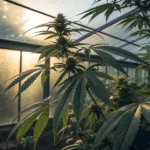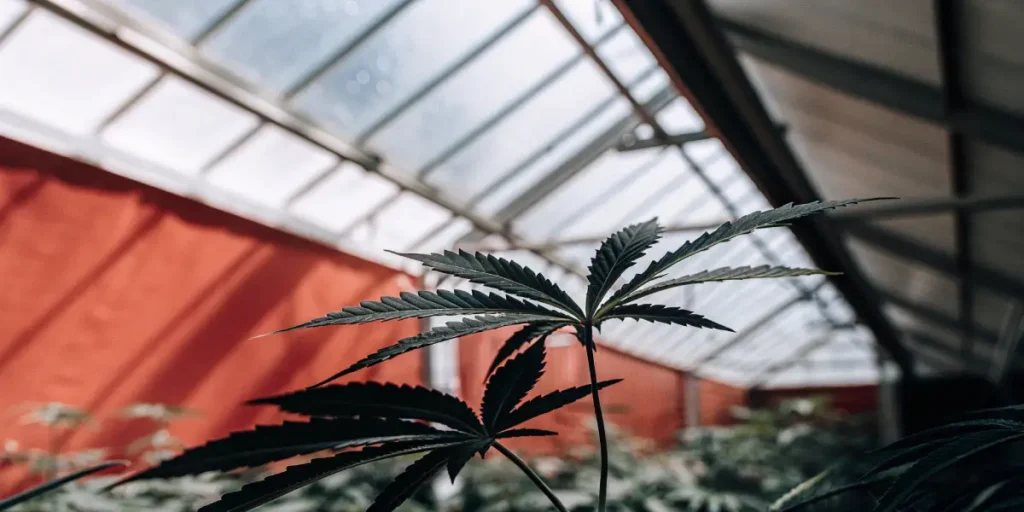
ROS and Trichome Development in Marijuana
Many cannabis enthusiasts, whether first-time seed buyers or seasoned growers, find themselves intrigued by the tiny, glittering structures on marijuana plants known as trichomes. These little glands are crucial for the plant’s defense and its potent aroma and flavor. However, a lesser-known factor influencing trichome development is ROS, or reactive oxygen species.
ROS are molecules produced naturally in plants. They play a role in signaling pathways that can trigger various physiological changes. In the context of cannabis, ROS and trichome development in marijuana are closely linked. Cannabis plants produce trichomes as a defense mechanism against environmental stressors. Here, ROS act as both a signal and a stress factor, influencing trichome growth.
Recommended Strains
Mamba Negra
|
|
THC | 18% (Medium) |
|
|
Type | Feminized |
|
|
Yield | High |
|
|
Phenotype | 55% Indica / 45% Sativa |
Zombie Death Fuck
|
|
THC | 23% (Medium) |
|
|
Type | Feminized |
|
|
Yield | Medium |
|
|
Phenotype | 50% Indica / 50% Sativa |
Growers often observe that under certain stress conditions, like high light or nutrient imbalance, trichome production ramps up. This is because the stress increases ROS levels, which in turn stimulates trichome development. Thus, knowing the relationship between ROS and trichome development in marijuana can help growers optimize their cultivation techniques for better yield and potency.
Reactive Oxygen Species Role in Cannabis Trichome Formation
When discussing ROS and trichome development in marijuana, it’s essential to grasp how reactive oxygen species function. These molecules often get a bad rap due to their association with oxidative stress, but they are vital for plant growth and development. In cannabis, ROS help signal the plant to produce more trichomes, which can lead to more potent buds.
Trichome formation in marijuana under ROS stress is a fascinating process. When a plant is stressed, ROS levels increase, which can activate specific genes responsible for trichome production. This means that a bit of stress, managed correctly, might actually benefit your cannabis plants. It’s a balancing act—too much stress could damage the plant, while the right amount encourages trichome growth.
The role of reactive oxygen species in cannabis trichome formation cannot be understated. By enhancing the plant’s natural ability to adapt to environmental stress, ROS facilitate a robust trichome response. This adaptation mechanism is crucial, as it not only aids in the plant’s defense but also contributes to the overall potency and quality of the cannabis crop.
Moreover, knowing the reactive oxygen species role in cannabis trichome formation allows for more strategic cultivation practices. Growers can employ various techniques to manipulate ROS levels, thus optimizing trichome production. This knowledge empowers cultivators to make informed decisions about environmental adjustments, ultimately leading to a more successful and productive harvest.
Promos & Deals
Oxidative Stress Influence on Marijuana Trichomes
Oxidative stress occurs when there’s an imbalance between ROS and a plant’s ability to detoxify them. This stress can be both harmful and beneficial. In cannabis cultivation, a controlled amount of oxidative stress can enhance trichome production. Growers often notice that plants grown under high-intensity lights tend to have more trichomes, partially due to increased ROS levels.
Managing oxidative stress is key. By carefully controlling environmental factors like light intensity, nutrient availability, and temperature, growers can influence the ROS signaling pathways in cannabis trichome development. This approach not only enhances trichome growth but also improves the overall quality of the cannabis produced.
The influence of oxidative stress on marijuana trichomes is a double-edged sword. While excessive stress can be detrimental, a mild level of oxidative stress can boost the plant’s natural defenses and trichome production. This balance is critical in ensuring that plants remain healthy while maximizing their potential for cannabinoid and terpene production.
For cultivators, knowing the oxidative stress influence on marijuana trichomes is essential for refining their growing techniques. By monitoring and adjusting environmental conditions, growers can create an optimal setting for trichome development. This not only enhances the plant’s resilience but also its market value, providing a higher return on investment.
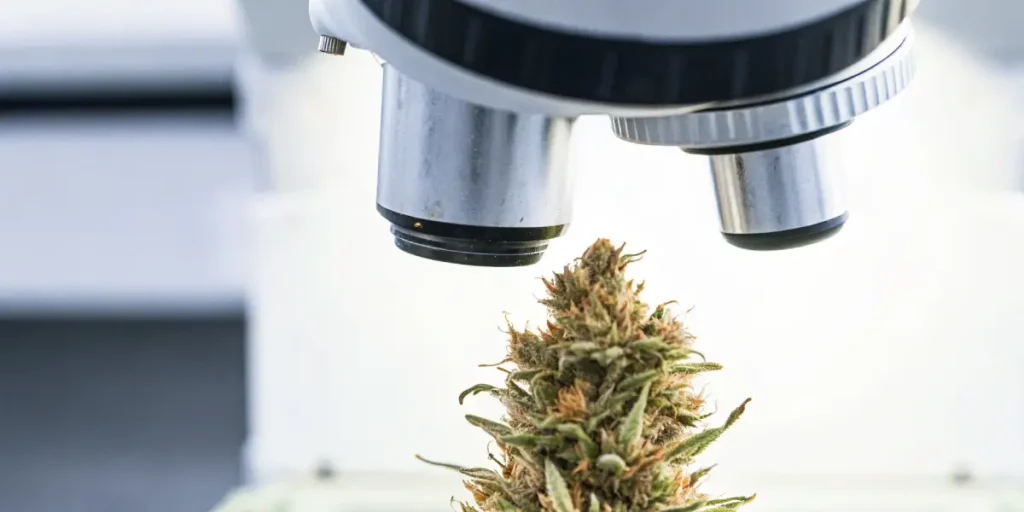
ROS Signaling Pathways in Cannabis Trichome Development
ROS signaling pathways are complex networks that facilitate communication within the plant at the cellular level. When ROS levels rise, they trigger a cascade of signals that can lead to increased trichome production. This is why certain strains, like those from Blimburn Seeds, are bred to respond well to stress, enhancing their trichome-rich profiles.
For example, strains such as “Mamba Negra” are known for their dense trichome coverage. These strains thrive under conditions that slightly elevate ROS levels, such as controlled light stress. This controlled stress enhances the strain’s natural ability to produce trichomes, resulting in a more potent and aromatic harvest.
The knowing of ROS signaling pathways in cannabis trichome development opens new avenues for targeted breeding and cultivation practices. By tapping into these pathways, growers can enhance the genetic potential of their strains, leading to a more efficient production of trichomes and associated compounds.
Furthermore, by manipulating the ROS signaling pathways in cannabis trichome development, growers can achieve a more consistent and predictable yield. This scientific approach not only ensures a high-quality product but also aligns with sustainable agriculture practices, as it encourages the use of natural plant responses rather than external chemical inputs.
Practical Tips for Enhancing Trichome Production
To maximize trichome development, growers should focus on managing stress levels effectively. Stress techniques, such as gradually increasing light intensity, can elevate ROS levels just enough to stimulate trichome growth without harming the plant. Selecting robust strains from Blimburn Seeds, like “Gorilla G4,” can also be beneficial as these are bred to withstand and thrive under varying stress conditions.
Another tip is to adjust nutrient levels strategically. By slightly altering the nutrients, particularly phosphorus levels, growers can influence trichome production. It’s about finding the sweet spot where ROS levels are optimal for trichome growth without tipping the plant into harmful stress.
- Adjust light intensity gradually to manage ROS levels.
- Select strains with high trichome potential like “Mamba Negra” and “Gorilla G4”.
- Monitor and tweak nutrient levels for optimal trichome production.
- Keep a close eye on environmental factors like temperature and humidity.
- Consider stress training techniques to promote trichome growth.
Implementing these practical tips can significantly enhance trichome production, resulting in a more aromatic and potent cannabis crop. Knowing the effect of reactive oxygen species on cannabis trichome growth can provide growers with a competitive edge in the market.
Moreover, by incorporating these strategies, cultivators can ensure that their plants are not only productive but also resilient against potential stressors. This holistic approach to cultivation can lead to higher quality yields and more satisfied consumers, reinforcing the importance of ROS and trichome development in marijuana.
Effect of Reactive Oxygen Species on Cannabis Trichome Growth
Reactive oxygen species are integral to trichome growth in cannabis. They work as signaling molecules that can trigger the plant’s defense mechanisms, leading to an increase in trichome density. This is why cannabis plants exposed to mild stress conditions often produce more trichomes.
Growers aiming to enhance trichome growth should consider the strain selection carefully. Strains like “Zombie Death Fuck” from Blimburn Seeds are particularly responsive to ROS-induced stress, producing a rich layer of trichomes. Such strains are genetically predisposed to harness the benefits of ROS signaling, making them ideal for those looking to maximize trichome output.
The effect of reactive oxygen species on cannabis trichome growth is a testament to the plant’s ability to adapt and thrive under varying conditions. By leveraging this natural response, growers can optimize their cultivation practices to achieve superior quality and yield.
Knowing the effect of reactive oxygen species on cannabis trichome growth also highlights the importance of selecting the right strains. By choosing genetically robust varieties, cultivators can ensure that their plants are well-equipped to handle stress and produce abundant trichomes, resulting in a more potent and desirable product.

FAQs about ROS and trichome development in marijuana
What are reactive oxygen species (ROS) in cannabis?
Reactive oxygen species are molecules that include free radicals and peroxides. In cannabis, they act as signaling agents that can influence various growth processes, including trichome development. While they can cause damage if levels become too high, in moderate amounts, they help the plant respond to stress by increasing trichome production.
ROS are naturally produced during metabolic processes in the plant. When environmental conditions change, such as increased light or nutrient stress, ROS levels can rise. This rise in ROS can activate specific genes responsible for producing more trichomes, thus enhancing the plant’s potency and flavor profile.
Knowing the function of ROS in cannabis is crucial for growers aiming to optimize trichome production. By harnessing the power of these molecules, cultivators can create conditions that favor trichome formation without compromising the plant’s health.
Additionally, the knowledge of how ROS function in cannabis provides valuable insights into stress management. By fine-tuning environmental factors, growers can maintain ROS at levels that promote growth and trichome development, leading to a more successful cultivation process.
How can growers manage oxidative stress to enhance trichome production?
Managing oxidative stress involves controlling the factors that influence ROS levels. Growers can adjust light intensity, nutrient supply, and other environmental conditions to mildly stress the plant. This stress, when carefully managed, can lead to an increase in trichome production as the plant activates its defense mechanisms.
Using strains bred for high trichome production, such as those available from Blimburn Seeds, can also be beneficial. These strains are more capable of managing oxidative stress and converting it into a positive growth response, enhancing their trichome density and quality.
Effective management of oxidative stress is a key component in enhancing trichome production. By knowing the intricate balance between stress and growth, growers can create an environment that encourages the plant to thrive.
This approach not only results in higher trichome density but also improves the overall resilience of the plants. By integrating these practices, cultivators can achieve a more robust and productive crop, maximizing their investment in the cultivation process.
Why is trichome development important for cannabis plants?
Trichomes are vital for cannabis plants as they house the majority of the plant’s cannabinoids, terpenes, and flavonoids. These compounds are responsible for the plant’s unique effects, aroma, and flavor. Trichomes also serve as a protective barrier against pests and environmental stressors.
By knowing ROS and trichome development in marijuana, growers can optimize their cultivation practices to produce plants with higher trichome density. This not only improves the plant’s defense mechanisms but also enhances the overall quality and market value of the cannabis.
The significance of trichome development extends beyond protection and potency. Trichomes play a crucial role in the plant’s reproductive strategy, attracting pollinators and ensuring the propagation of the species. This multifaceted function underscores the importance of fostering optimal trichome growth.
Furthermore, the economic implications of trichome development are substantial. Cannabis products with higher trichome content are often more sought after, commanding higher prices in the market. Thus, focusing on trichome development is not only beneficial for the plant but also for the growers and consumers.
What strains from Blimburn Seeds are best for high trichome production?
Strains like “Mamba Negra,” “Gorilla G4,” and “Zombie Death Fuck” are renowned for their high trichome production. These strains are bred to thrive under conditions that slightly elevate ROS levels, making them ideal for growers looking to maximize trichome output.
Each of these strains has its own unique characteristics, but they all share a genetic predisposition for robust trichome development. By selecting these strains, growers can take advantage of their natural ability to enhance trichome density through ROS signaling pathways.
These strains from Blimburn Seeds offer a reliable option for growers seeking to enhance their trichome yield. Their genetic makeup is specifically designed to respond positively to environmental stimuli, ensuring a consistent and high-quality harvest.
In addition to their trichome-rich profiles, these strains are also known for their resilience and adaptability. This makes them an excellent choice for both novice and experienced growers looking to achieve optimal results in their cultivation endeavors.
Can too much ROS be harmful to cannabis plants?
Yes, excessive levels of ROS can be detrimental to cannabis plants. High ROS levels can lead to oxidative stress, damaging cellular components and inhibiting plant growth. However, when managed properly, ROS can be beneficial by promoting trichome development and enhancing the plant’s defense mechanisms.
It’s important for growers to find a balance. By controlling environmental factors and selecting strains from Blimburn Seeds that are capable of thriving under controlled stress conditions, growers can leverage the benefits of ROS without causing harm to the plants.
The key to successful cultivation lies in the careful management of ROS levels. By maintaining a delicate balance, growers can encourage healthy plant development while minimizing the risks associated with oxidative stress.
Ultimately, knowing the potential impact of ROS on cannabis plants allows cultivators to make informed decisions. By fine-tuning their growing practices, they can ensure that their plants remain healthy and productive, resulting in a more rewarding cultivation experience.


